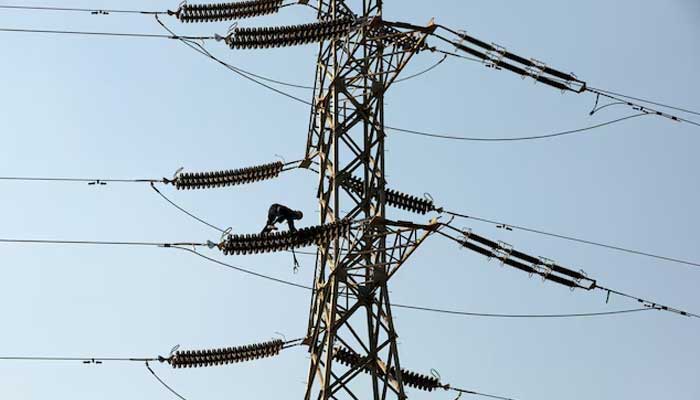
- Monopoly by state-owned enterprises restricts private sector entry, increases costs: CCP.
- The report stresses the necessity of privatization and switching to competitive prices.
- He laments transmission and distribution losses and aging infrastructure.
ISLAMABAD: Pakistan is in dire need of competitive reforms in its energy sector which has long been dominated by state-owned enterprises and burdened with inefficiencies, the Competition Commission of Pakistan (CCP) said. News reported on Saturday.
The Communist Party of Pakistan report, “State of Competition in Pakistan’s Key Markets: Energy Sector,” says that the monopoly grip of the energy sector, which is largely controlled by state enterprises, restricts private sector entry and drives up costs, leaving consumers with high bills and limited choices. .
He added that structural inefficiency and the centralized single buyer model exacerbate the problems, with energy losses exceeding 17.6%, aging infrastructure, and high circular debt.
The report also highlights the significant presence and influence of state-owned companies on competition within the energy sector, and provides strategic insights to foster a more competitive market environment.
“This report is a testimony to the Communist Party of China’s commitment to promoting fair competition and addressing market inefficiencies in every sector of the economy,” said CPC Chairman Dr. Kabir Ahmed Sidhu, stressing the critical role of the competitive energy sector in driving economic growth and ensuring Reasonably priced. Energy for consumers.
Moreover, the Forum calls for change: revitalizing the sector through privatization, investing in smart grids, and shifting to competitive pricing – before these entrenched disadvantages further erode economic stability and energy affordability in Pakistan.
It reveals fundamental weaknesses in market dynamics, regulatory frameworks, and quality of infrastructure that hinder efficiency and affordability in the sector.
Transmission and distribution are primarily controlled by the National Transmission and Distribution Corporation (NTDC) and regional distribution companies (discos).
The single-buyer model further restricts competition, with the Central Power Procurement Agency (CPPA-G) acting as the sole buyer for energy producers. This centralized setup not only discourages private investment, but also contributes to a high level of operational inefficiency, especially in distribution where average losses exceed 17.6%.
The sector’s installed capacity has grown to 45,885 MW as of June 2023, with a diversified energy mix. Thermal sources represent 62.79% of this capacity, followed by hydropower (23.18%), nuclear (7.89%), and renewable energy sources (6.14%).
Furthermore, the Competitive Bilateral Contract Market Model (CTBCM) was approved in 2020 to encourage private players, allowing wholesale consumers to choose their own energy providers.
Key vulnerabilities include significant transmission and distribution losses, aging infrastructure, and circular debt that exacerbates inefficiency. The Paris Agreement, which provided subsidies under the Tariff Differential Support (TDS) mechanism, although intended to stabilize prices, often disproportionately benefits inefficient discos, undermining market equity. In addition, unreasonable system fees deter new entrants into the private sector, hindering competitive pricing and sectoral reforms.
Pakistan has great potential to enhance competition by effectively implementing the CTBCM model. Encouraging private sector participation, especially through initiatives such as competitive bidding for low-cost power generation projects, can reduce consumer prices and improve operational efficiency. Investing in smart grids and renewable energy, as we have seen in other countries, represents a sustainable path forward.
Geographical and socio-economic challenges, including high costs associated with rural grid expansion and power loss due to long-distance transmission, create a complex operating environment.
Resistance from entrenched state-owned enterprises and regulatory delays could hinder needed reforms. Without rapid action, the inefficiency of this sector could burden Pakistan’s economic growth and energy affordability.
The report calls for comprehensive reforms, including phased privatization or public-private partnerships in discotheques to address distribution losses. It also recommends investment in infrastructure, tariff rationalization, and regulatory improvements to support the implementation of the CTBCM model, paving the way for broader retail competition.
The CCP recommends rapid implementation of the CTBCM model to open up the wholesale electricity market, giving wholesale consumers more choices and enhancing competition.
Strengthening regulatory and market affairs within discotheques is essential, along with transparent fees for transportation and distribution services, and the CPC also advises phasing out inefficient state-owned factories to reduce costs.
Competitive bidding must be used for low-cost generation projects, and private sector participation in transmission expansion is critical to achieving efficiency. Converting discotheques into public-private partnerships or privatizing them will help reduce losses.
Adjusting tariff subsidies to avoid flat rates would enhance efficiency, and gradually lowering the threshold for competition in the retail sector would enhance consumer choice.
Modernizing transportation and distribution infrastructure is critical to competition, and educating consumers about timely payment can improve financial stability and reduce theft. These steps aim to dismantle monopolies and create a more competitive and efficient energy sector.
